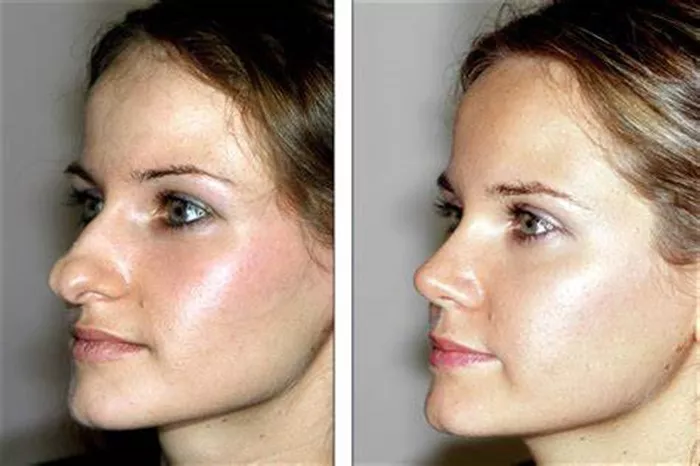Rhinoplasty, commonly known as a nose job, is one of the most popular cosmetic procedures worldwide. People opt for rhinoplasty for various reasons, such as improving breathing, correcting congenital defects, or enhancing facial aesthetics. One common concern among those considering this surgery is whether others will notice the change. This article delves into the factors that influence the visibility of rhinoplasty results and offers insights into managing expectations.
Understanding Rhinoplasty
Rhinoplasty involves reshaping the nose to achieve a desired appearance or improve function. Surgeons can alter the size, shape, and structure of the nose by modifying the bone, cartilage, and skin. The procedure can address a wide range of issues, including:
1.Nasal asymmetry
2.A crooked or deviated septum
3.A hump or bump on the bridge
4.A drooping or upturned nasal tip
5.Wide nostrils
The goal of rhinoplasty is to create a nose that complements the patient’s facial features and meets their aesthetic or functional needs.
See also: What Types Of Nose Jobs Are Covered By Insurance?
Factors Influencing Noticeability
Several factors determine whether others will notice your rhinoplasty. These include the extent of the changes, the skill of the surgeon, the healing process, and individual perceptions.
Extent of Changes
Subtle changes are less likely to be noticed by others. If the modifications are minor, such as refining the tip or smoothing a small hump, people may not recognize the difference unless they are very familiar with your face. However, more significant changes, like reducing the size of a large nose or correcting a pronounced deviation, may be more noticeable.
Skill of the Surgeon
The expertise of the surgeon plays a crucial role in achieving natural-looking results. A skilled surgeon can make precise adjustments that enhance the nose without making it appear surgically altered. Selecting a board-certified plastic surgeon with extensive experience in rhinoplasty is essential for a successful outcome.
Healing Process
The healing process can also impact the visibility of the results. Swelling and bruising are common after rhinoplasty and can last for several weeks to months. During this time, the nose may appear different, but these changes are typically temporary. Once the swelling subsides, the final results will become more apparent.
Individual Perceptions
Perception is subjective, and how others perceive your nose may vary. Some people may not notice any change, while others might see a difference immediately. Your close friends and family members, who are more familiar with your appearance, are more likely to notice subtle changes.
Managing Expectations
Managing expectations is crucial when considering rhinoplasty. Here are some tips to help you prepare for the procedure and its aftermath:
Consultation: Have a thorough consultation with your surgeon to discuss your goals and expectations. Understand what is achievable and what may not be possible.
Realistic Goals: Set realistic goals for your rhinoplasty. Aim for improvement rather than perfection.
Patience: Be patient during the healing process. It can take up to a year for the final results to fully manifest.
Open Communication: Communicate openly with your surgeon about any concerns or questions you may have.
Post-Surgery Care
Proper care after surgery can influence the final outcome and how noticeable the results are. Follow these post-surgery care tips:
Follow Instructions: Adhere to your surgeon’s post-operative instructions carefully.
Rest: Get plenty of rest and avoid strenuous activities that can impact the healing process.
Avoid Trauma: Protect your nose from any trauma or pressure.
Healthy Lifestyle: Maintain a healthy lifestyle to support the healing process.
Psychological Impact
Rhinoplasty can have a significant psychological impact. The changes in appearance can boost self-confidence and self-esteem. However, it’s essential to be mentally prepared for the adjustment period. Here are some psychological aspects to consider:
Self-Perception: How you perceive yourself can change after rhinoplasty. Embrace the positive changes and give yourself time to adjust.
External Reactions: Be prepared for varied reactions from others. Some may compliment your new look, while others may not notice the changes at all.
Emotional Support: Seek emotional support from friends, family, or a therapist if needed.
Personal Experiences
Hearing from individuals who have undergone rhinoplasty can provide valuable insights. Here are a few personal stories:
Case Study 1: Emma’s Experience
Emma, a 28-year-old teacher, opted for rhinoplasty to correct a deviated septum and refine the tip of her nose. Her colleagues noticed a subtle improvement but couldn’t pinpoint what had changed. Emma felt more confident and happy with her decision.
Case Study 2: John’s Journey
John, a 35-year-old engineer, had a more pronounced hump removed from his nose. His friends noticed the change and complimented his new look. John felt the surgery positively impacted his self-esteem.
Case Study 3: Lisa’s Transformation
Lisa, a 24-year-old model, underwent rhinoplasty to enhance her facial symmetry. Her family noticed the change immediately, but her acquaintances did not. Lisa felt more comfortable in her skin and appreciated the subtle enhancement.
Conclusion
Rhinoplasty is a transformative procedure that can enhance both appearance and function. Whether or not others notice the change depends on various factors, including the extent of the modifications, the surgeon’s skill, the healing process, and individual perceptions. Managing expectations, following post-surgery care instructions, and being mentally prepared for the changes are crucial for a successful outcome. Personal experiences highlight that rhinoplasty can lead to positive psychological effects, boosting self-confidence and self-esteem. Ultimately, the decision to undergo rhinoplasty should be based on your personal goals and desires for self-improvement.
Related topics:
Do Nose Reshaping Devices Work?
How Long Does A Nose Tip Lift Last?
How Much Does A Small Nose Job Cost?


